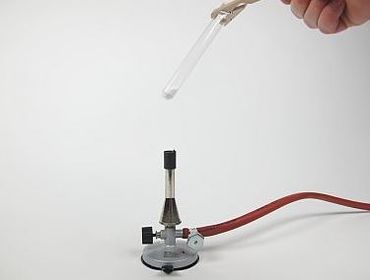setTimeout(function(){
window.print();
},500)

Technical data The detection of sulphurArticle no: P7170500  Principle On melting, sodium carbonate decomposes and thereby reacts with the sulphur present in organic substances under the formation of brown coloured sodium polysulphides. The colour of these polysulphides is similar to that of liver, and this is the basis for the name "Hepar test", Hepar being Greek for liver. Soluble polysulphides form silver sulphide spontaneously with metallic silver. Proteins with a high content of cysteine or methionine are particularly rich in sulphur. These include the vegetable proteins in the fruits of leguminous plants. Learning objectives
Benefits
Scope of delivery
| ||||||||||||||||||||||||||||||||||||||||||
PHYWE Systeme GmbH & Co. KG
Robert-Bosch-Breite 10 – 37079 Göttingen – Germany
www.phywe.com
Robert-Bosch-Breite 10 – 37079 Göttingen – Germany
www.phywe.com

